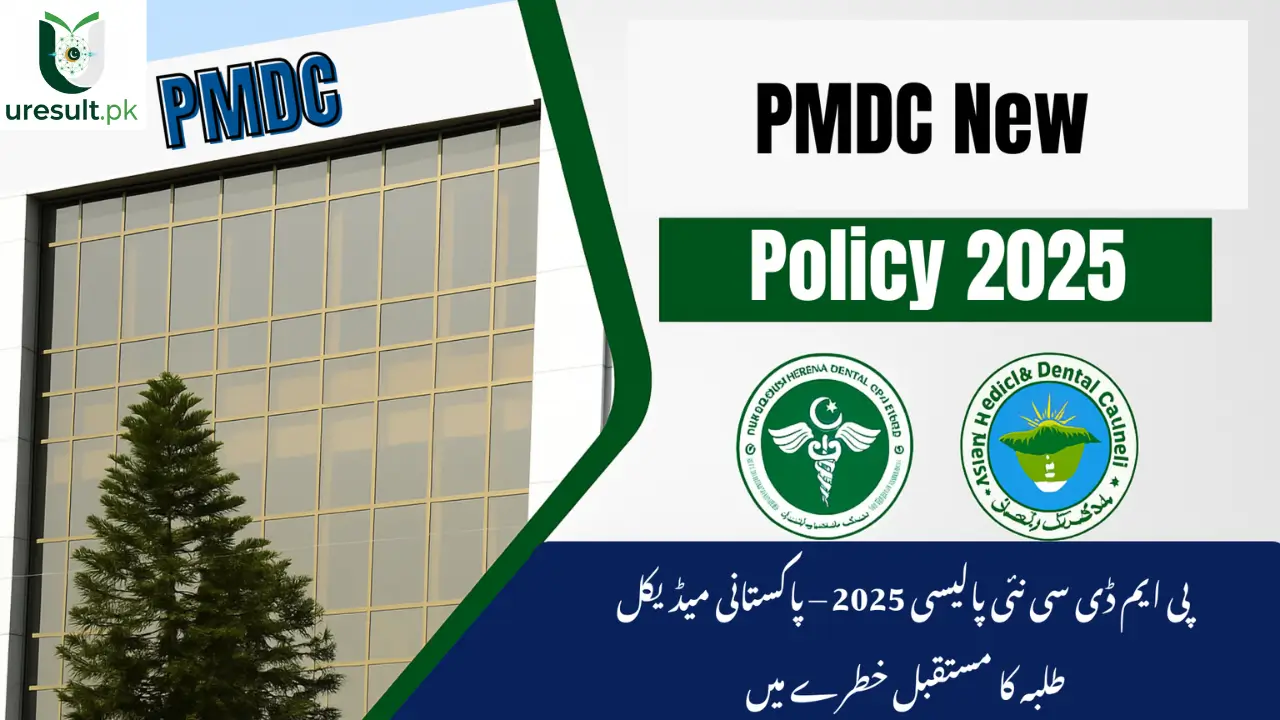The introduction of the PMDC New Policy 2025 has become a hot topic of debate in Pakistan, especially among medical students, educators, and healthcare professionals. The policy, which aims to overhaul the country’s medical education system, has sparked concerns about its potential negative impact on the future of medical students.
While the goal is to improve medical education standards and the quality of healthcare, many are questioning whether the PMDC New Policy will achieve these objectives or whether it will create more challenges for aspiring doctors.
 Also read
Also read
What Is the PMDC New Policy 2025?
The PMDC New Policy 2025 outlines new regulations for medical education and practice in Pakistan. It includes stricter eligibility criteria for admission to medical colleges, an increase in tuition fees, and a more centralized approach to medical licensing. The policy is designed to ensure that medical professionals are better trained and more competent. However, many students and educators feel that these changes are not just difficult but also unrealistic for those already pursuing a medical career in Pakistan.
Financial Burden on Medical Students
One of the most pressing concerns regarding the PMDC Policy 2025 is the financial burden it places on medical students. The policy allows private medical colleges more autonomy in determining their tuition fees. This flexibility means that the cost of medical education could skyrocket, making it unaffordable for many students, particularly those from lower-income families. With the already high cost of education in private colleges, the PMDC New Policy is likely to deepen the financial divide between those who can afford medical school and those who cannot.
 Also read
Also read
Stricter Admission Criteria and Increased Competition
The PMDC New Policy 2025 also introduces tougher admission criteria, making it harder for students to secure a place in medical colleges. The policy emphasizes higher academic performance and more rigorous entrance exams, which many students feel will only make medical education more elitist. For students from rural or underprivileged backgrounds, these new requirements may serve as an insurmountable barrier, limiting their chances of entering medical programs. This could further contribute to the widening inequality in Pakistan’s education system.
Effects on Public and Private Medical Colleges
Both public and private medical institutions will be significantly impacted by the PMDC New Policy. Public colleges, which are already struggling with limited resources, may find it difficult to implement the new regulations and adapt to the policy’s increased standards. The financial and infrastructural demands of the policy could exacerbate the existing issues in these institutions.
On the other hand, private medical colleges, which often have better infrastructure and resources, may benefit from the policy’s flexibility, allowing them to raise tuition fees even further. This will likely create a greater disparity in the quality of education between public and private colleges, leaving students who can’t afford the higher fees at a disadvantage.
 Also read
Also read
The New Licensing Exam: Another Challenge for Graduates
One of the more controversial elements of the PMDC Policy 2025 is the introduction of a centralized medical licensing exam. This exam, which all graduates must pass to practice in Pakistan, has been met with criticism from medical students. Many feel that this additional requirement adds unnecessary stress and creates another barrier to entry into the healthcare profession. The licensing exam is intended to ensure that only the most qualified individuals become doctors, but for many students, it is seen as just another hurdle in an already difficult journey.
The Long-Term Impact on Pakistan’s Healthcare System
While the PMDC New Policy is designed to improve the standard of medical education, its long-term impact on Pakistan’s healthcare system could be more harmful than beneficial. With tougher admission criteria, higher tuition fees, and additional licensing exams, fewer students may be able to afford or qualify for medical school.
 Also read
Also read
This could result in a shortage of medical professionals in the country, particularly in underserved rural areas. Pakistan already faces a critical shortage of healthcare workers, and the PMDC New Policy might make it even harder to address this issue.
 Also read
Also read
Medical Students’ Growing Concerns and Protests
In response to the PMDC New Policy, medical students across the country have voiced their concerns, with many organizing protests and social media campaigns. They argue that the policy fails to address the root causes of the challenges facing medical education in Pakistan, such as outdated curricula, inadequate infrastructure, and the lack of practical training opportunities. Rather than focusing on punitive measures and additional exams, students believe that the policy should focus on creating a more inclusive and accessible system for all aspiring doctors.
| Key Issues | Impact of PMDC New Policy |
|---|---|
| Increased Tuition Fees | Higher financial burden on students, especially in private institutions |
| Stricter Admission Requirements | Limited access for students from lower-income backgrounds |
| Centralized Licensing Exam | Increased stress and additional barriers to entering the medical profession |
| Public vs Private Medical Colleges | Greater educational inequality, with private colleges benefiting more |
| Healthcare System | Increased shortage of healthcare professionals due to barriers to entry |
Conclusion
While the PMDC New Policy 2025 aims to improve the overall quality of medical education and ensure a more competent healthcare workforce, its potential negative impact on students and the healthcare system cannot be overlooked. The policy increases the financial burden, creates more competitive entry requirements, and adds additional exams, making it harder for many deserving students to pursue a career in medicine.
 Also read
Also read
